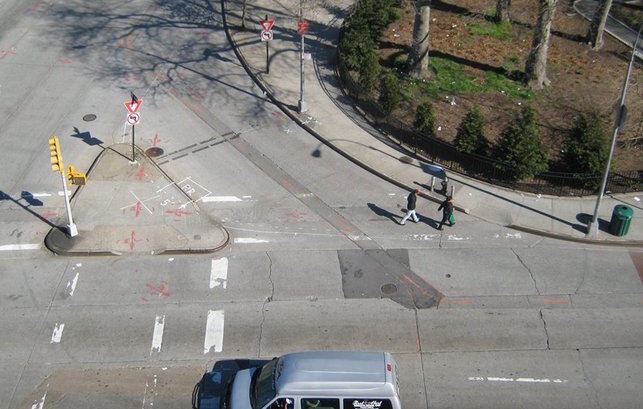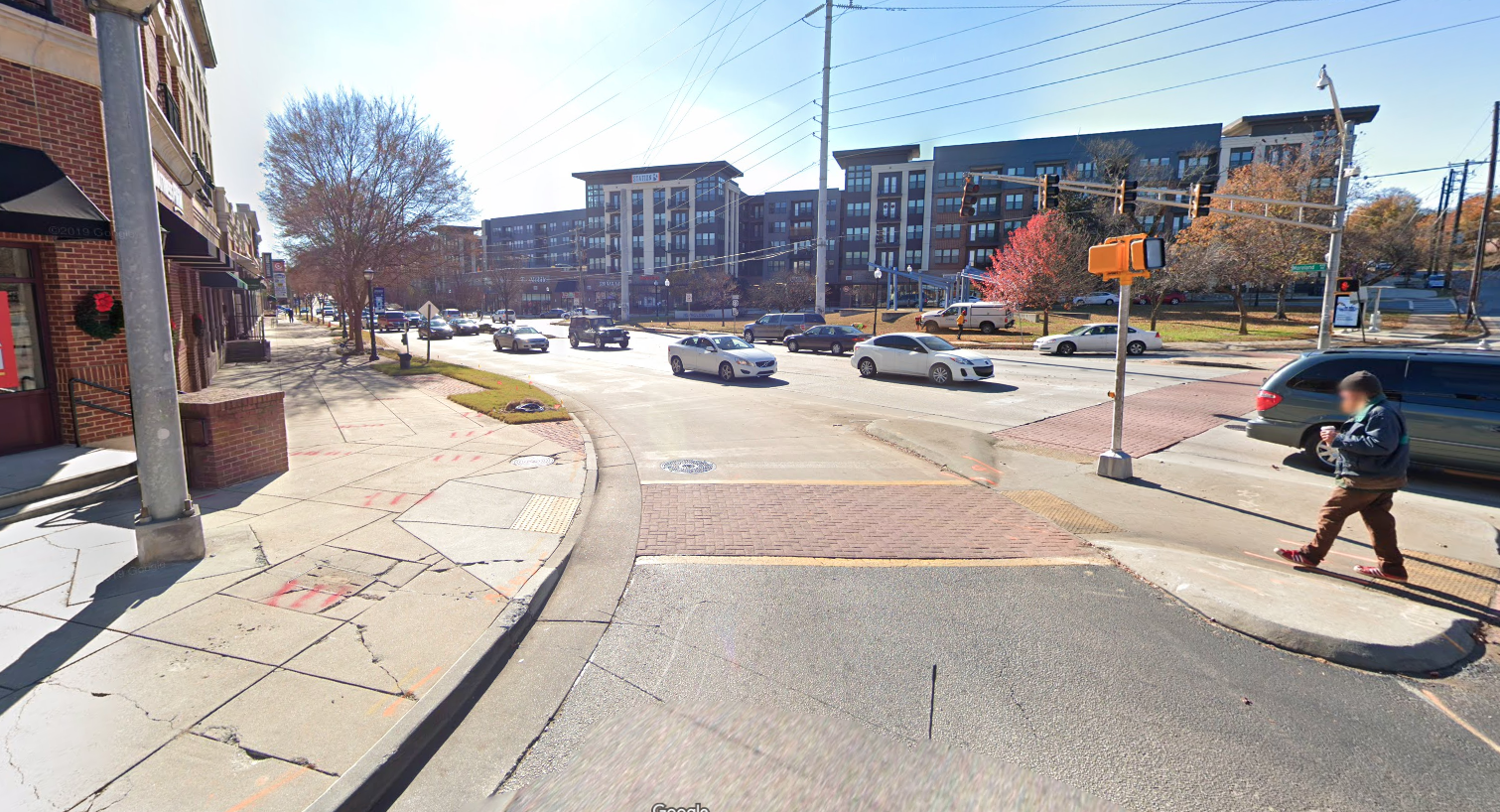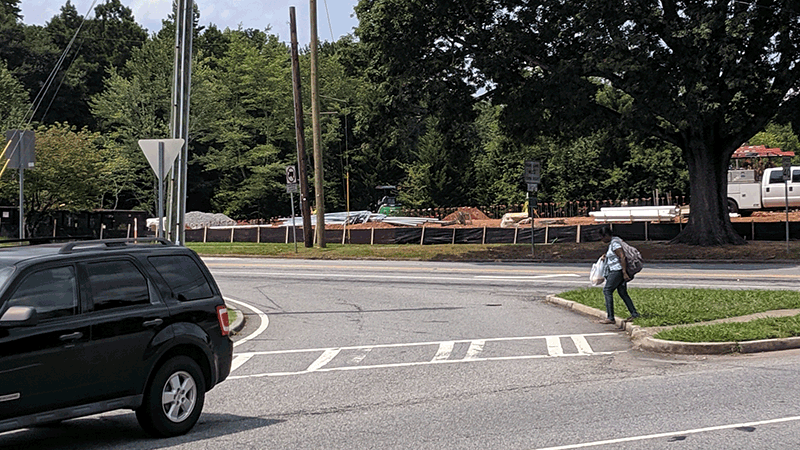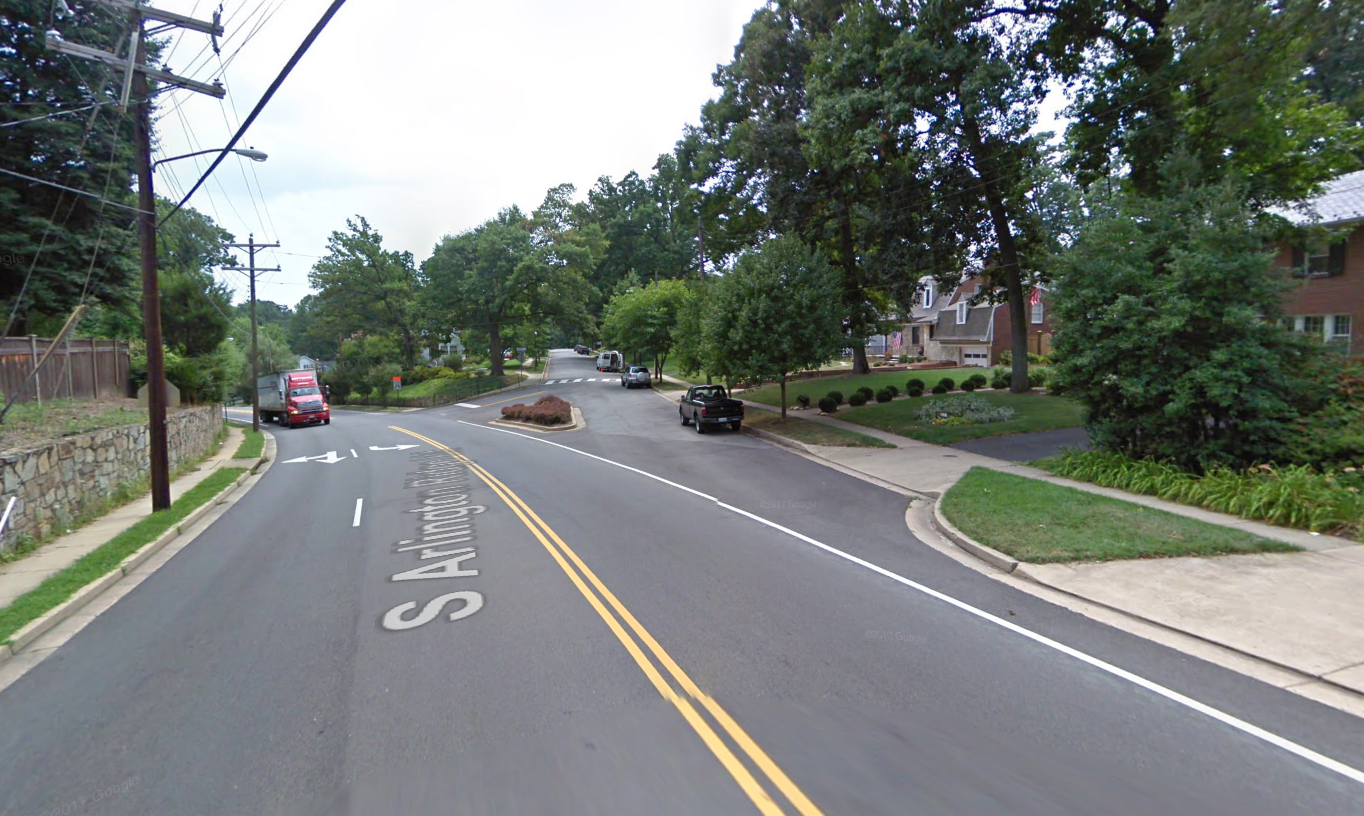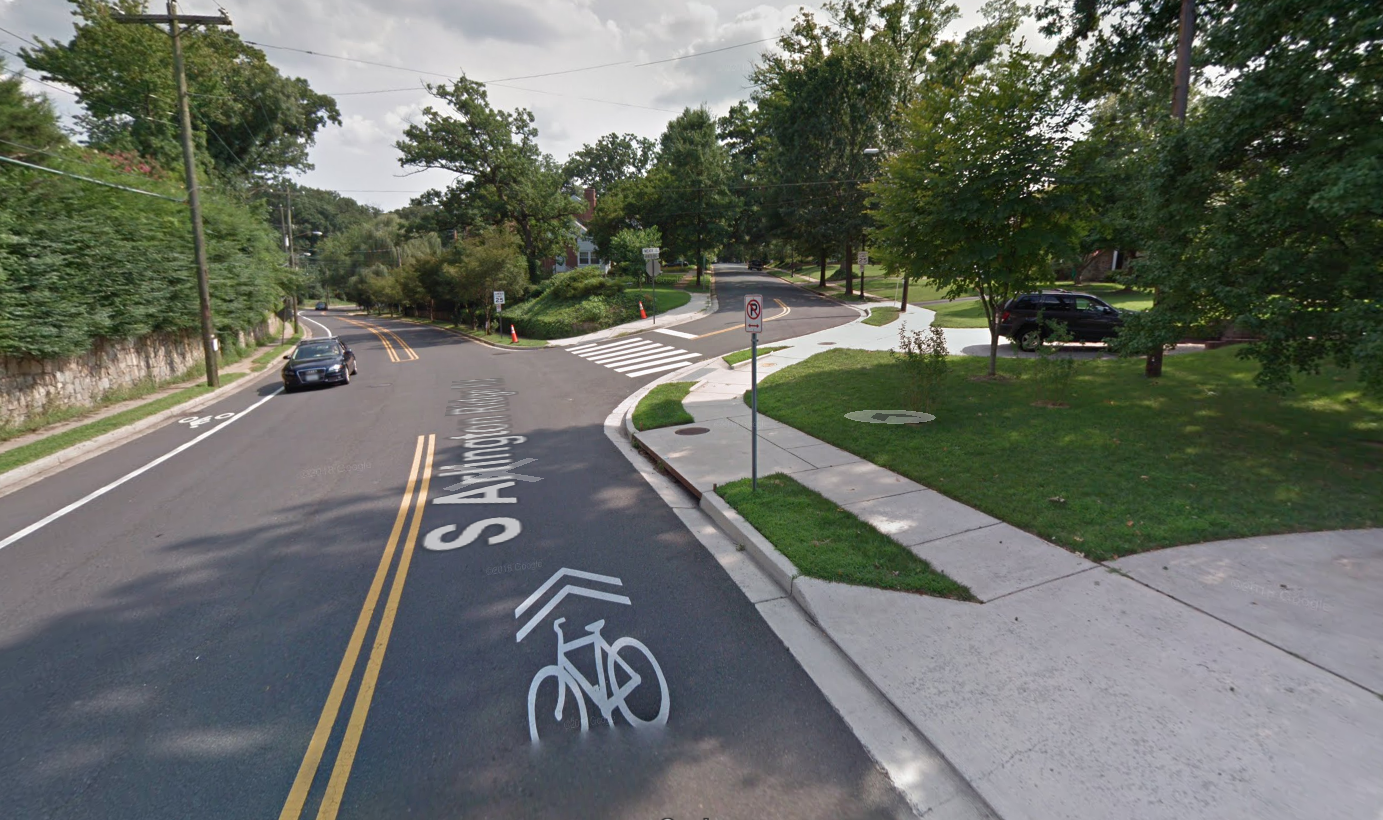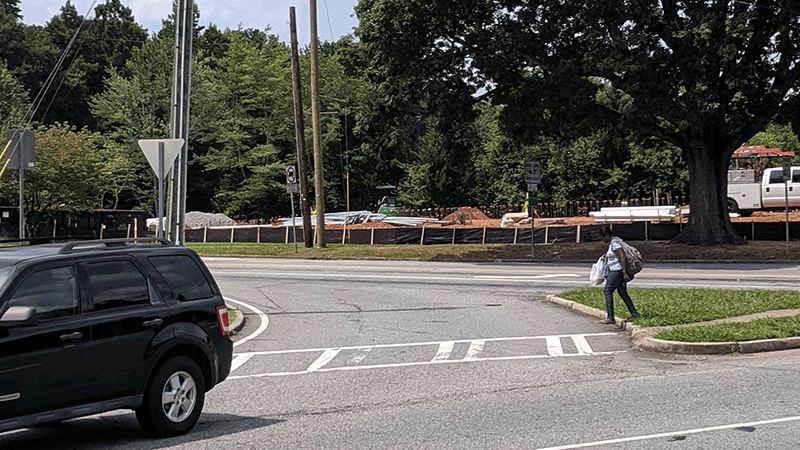Slip Lanes Would Never Exist if We Prioritized Safety Over Speed
Photo via Taras Grescoe on Twitter.
All this week, our friends over at Transportation for America are exploring in-depth one of their core principles for transportation investment—namely, that transportation design needs to prioritize safety over speed. They’re calling it “Safety over Speed Week,” and Strong Towns is honored to be a part of it. Today, we’re publishing a post from Stephen Lee Davis, the Communications Director at Smart Growth America. (Read the original here.) Tomorrow Strong Towns, will be co-hosting a #SafetyOverSpeed Twitter chat at 2 p.m. Eastern. Our own Daniel Herriges will be weighing in on the role speed plays in the alarming increase of pedestrian and cyclist deaths, and the importance of designing local roads for safer speeds. In the meantime, get caught up on the entire blog series at T4A and follow the #SafetyOverSpeed hashtag on Twitter.
—The Editors
Any traffic engineer or transportation official would surely tell you that safety, if not the most important consideration, is truly a core priority. But embedded deeply in our federal transportation program is another guiding principle that stands in direct opposition to safety: “Cars need to always move fast and never slow down.” Whatever the stated priorities are, this hidden prerequisite makes every other goal a nearly impossible task—especially safety.
Slip lanes on roads and streets are emblematic of what it looks like in practice to sacrifice safety on the altar of speed, where this underlying goal of “keep cars moving fast at all times” runs counter to the goal of “keep everyone safe while moving from A to B”—even if you say that safety is important. If we truly prioritize safety, as T4America is suggesting in our second principle, we would never build a slip lane on a local street again. (Note: Slip lanes could be helpful in some rare cases for intersections designed for large buses or trucks to physically make a turn in the space allotted, or where the right turn is sharper than a 90 degree turn. But this is not why most exist.)
What are slip lanes and why do they exist?
It’s important to remember that slip lanes were created to solve one specific set of problems: vehicle speed and delay.
They were borne of the simple realization by traffic engineers that cars turning right—even on a green light—can produce dreaded congestion because slowing down to a safe turning speed can delay traffic traveling straight. So to solve this one problem, they started adding lanes that allow traffic to make right turns without being required to slow or come to a stop, often accompanied with an additional lane on the approach or the exit. Whether you live in a rural, urban or suburban area, this feature isn’t hard to find: they’re a regular feature in most environments that were designed and built with federal money and guidance over the last 50 years.
Safety was always at best a secondary consideration, though it really wasn’t considered much at all for decades as traffic engineers started adding slip lanes to road projects all over the country.
Slip lanes are dangerous because they prioritize vehicle speed over the safety of everyone who needs to use the road
Slip lanes increase the distance that people have to cover to cross a street, put people into spots that are often the hardest for drivers to see, and encourage drivers not to slow down when approaching an intersection and a crosswalk—the precise moment they should be the most careful. This slip lane I saw in N. Fulton County, Georgia earlier this summer is a pretty typical design.
Traveling east on N. Hembree Road (with a speed limit of 40 mph!), if a driver is planning to turn right here and sees the green light ahead, all the design cues are directing the driver to blaze through the right turn onto Alpharetta Highway without slowing down. That driver could be hitting maximum speed right as they reach the crosswalk across the slip lane—exactly the spot where engineers have said that a pedestrian should “safely” cross this street.
I saw a woman crossing here and I was astonished to see that in the time that it took her to take just three steps from the middle of the street towards safety, a minivan goes from entirely out of the frame to just 10 feet away from her.
Because slip lanes were borne of the sole focus on avoiding vehicle delay, all efforts to make them “safer” will be limited. Safety is not why they exist. Even the Federal Highway Administration (FHWA) knows they are inherently unsafe—it’s astonishing to read their guidance for making them, in their words, “less problematic”:
Intersections should be designed to accommodate safe pedestrian crossings using tight curb radii, shorter crossing distances, and other tools as described in this document. While right-turn slip lanes are generally a negative facility from the pedestrian perspective due to the emphasis on easy and fast vehicle travel, they can be designed to be less problematic.
How are slip lanes emblematic of safety losing out to the ultimate priority of speed?
Here’s an intersection in Minneapolis with slip lanes on all four sides. These don’t exist primarily to make anyone safe—safety is an add-on consideration to the primary desire to keep cars moving as fast as possible through this intersection. Those crosswalks and pedestrian “islands” that you see aren’t designed to get anyone across this street in the safest way possible, they are a half-hearted attempt to make the best of a road designed explicitly to keep cars moving quickly above all else.
Making the experience for people walking on a “negative facility…to be less problematic,” is a pretty interesting choice of words to describe a deadly design feature at a time when pedestrian fatalities are hitting numbers not seen since 1990. But we keep building them because moving vehicles quickly and without delay is the outcome we care about above all others.
What prioritizing safety over speed would look like
As we say in our second principle, local and arterial roads must be designed to put safety first. Protecting the safety of all people who use the street must be a priority reflected in the decisions we make about how to fund, design, operate, maintain, and measure the success of our roads. The next surface transportation law must make safety a priority and start to undo the damage wrought by decades of federal design guidelines and billions in federal transportation dollars.
So what would this look like in practice? This small change in Arlington, Virginia is a great example.
This is a minor collector road that runs largely through a residential neighborhood—not too far from the future home of Amazon’s second HQ. This slip lane made it possible for drivers to whiz into the neighborhood street without so much as a tap on the brakes. Look down the street and what do you see right after cars have sped through the gentle right turn? A crosswalk. That’s what it looked like back in 2009, but here’s what it looks like today:
The lanes were narrowed, the slip lane was eliminated, the right turn was converted into a sharper turn that requires drivers to slow down before turning, and the crosswalk was moved to the safest and shortest point of the intersection where pedestrians will be the most visible. 2
It’s very possible that because cars now have to slow down to turn right, that traffic occasionally slows down on the main road. There could even be a slight back up if a few people are turning right and have to yield to someone crossing the street. But this change is exactly what it looks like in practice to prioritize safety over vehicle speed or delay.
While this small change is certainly one worth celebrating, this isn’t the standard practice of state DOTs that control the lion’s share of federal transportation funds, and speed remains their number one priority—even if they have a stated commitment to safety. This project was the result of a local county making decisions on their own and with their own funds. Most states will not change their practices unless Congress gives a guiding directive that the lives of the 40,000 people who die as a result of traffic fatalities each year are more important than a few seconds of delay.
Access to safe, convenient transportation is a fundamental right. Today, most Americans are denied this right because their roads—not just their highways—are designed to move vehicles at the highest speeds possible, and roads are not designed for people walking, biking, or taking transit as a priority. Safety may be important, but it’s never the top priority when designing these streets.
Until we come to grips with the fact that moving cars fast at all times of day without delay is a goal that can’t always be squared with our other priorities—especially safety—and until we can admit that perhaps everyone is not going to be able to go fast all the time, we’ll continue building unnecessarily large and expensive roads where thousands of people are killed each year.
No more slip lanes. Because safety should be a primary goal of our transportation investments.
About the Author
Steve Davis is the Director of Communications for Smart Growth America and Transportation for America. Trained at the University of Georgia’s Grady School of Journalism & Mass Communication, he was an award-winning photographer at the Arkansas Democrat Gazette before following his passion for great places to Smart Growth America. He loves the challenge of figuring out how to turn the complicated policies and details of creating more smart, sustainable, lovable places into messages that resonate with a wide range of people. Steve lives in the Petworth neighborhood of Washington, DC with his wife and three children and loves his three-mile run or bike ride to work.

